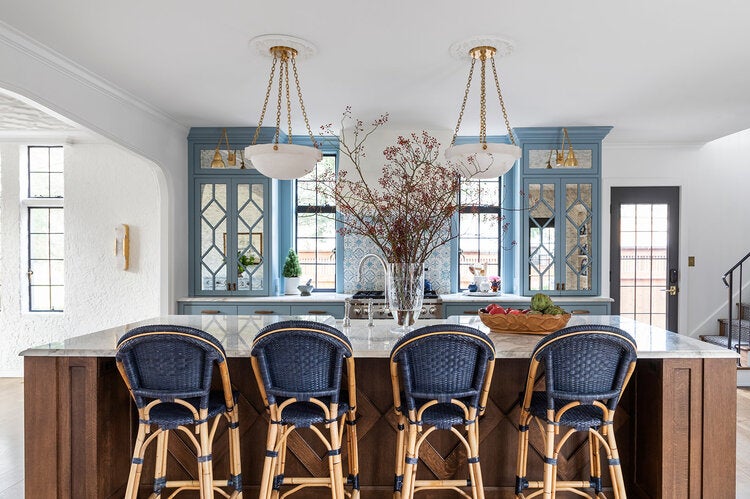Once you’re in the door, there’s plenty of advice floating around about style, project management, budget and all the rest—but how do you actually get the job in the first place? We’re asking designers to peel back the curtain and walk us through how they landed a project, step by step. Here, Indianapolis-based designer Tiffany Skilling recounts what it was like taking on her firm’s director of operations, Kelly Colby, as a client.
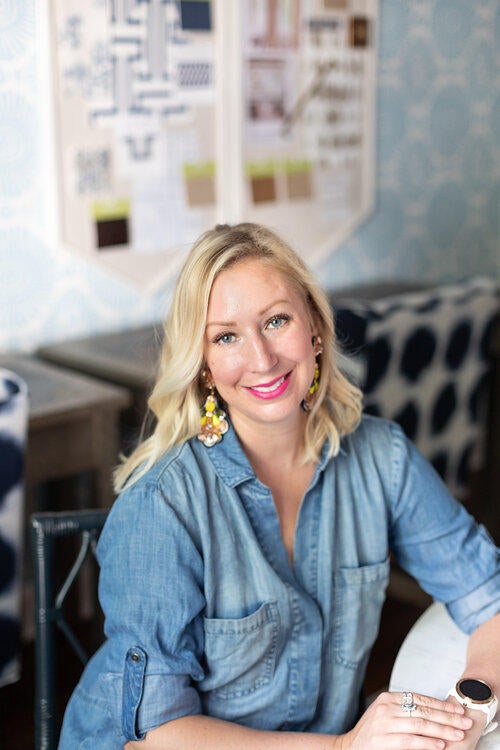
How long had you two worked together when you started on Kelly’s home?
Tiffany Skilling: Kelly started working with me four years ago. I was on my own at the time. I brought her on thinking I would just need her a few hours a week, which quickly turned into 30, and now she’s full-time. Kelly and her husband started their search for a new house in winter 2019.
Kelly Colby: We had renovated the house that we were living in at the time and weren’t looking to move at all, but we got a letter from a real estate agent saying that they had a client that was interested in buying our home. It got us thinking, and we decided just to look around and see if there was another house in the area we could see ourselves in. So, we started the search and dragged Tiffany and our contractor around to look at houses with us.
So, Tiffany, you were on board from the very inception!
Skilling: Yes! We just love each other's style and love working together. So, when she asked me to go look at houses, it was an immediate yes. Every house that we thought might be the one, we were dreaming it up already, coming up with plans.
Colby: And when we found the house we ended up buying, I made her look at it more than once before we signed the papers.
Was there any hesitation for either of you? Working together professionally and then personally as well seems like it could get tricky.
Colby: No, I was pumped. I was like, “I get to be the client! Awesome!”
Skilling: For me, it was great because I would come up with ideas and there was no pushback. She was on board with whatever I wanted to do.
Colby: I already had such respect for what Tiffany does and completely trusted her. With a lot of our new clients, if they don’t know her, there’s that time where you have to build up trust before they’re comfortable. We didn’t have to do that. I just told her, “Here’s what I think I would like—can you please do that?” And she did.
Skilling: We like getting to know clients and tell their story. That’s actually our firm’s motto, “Storytelling Through Design.” Because I already knew her family’s story, I was able to jump right in.
Colby: We had such a good time.
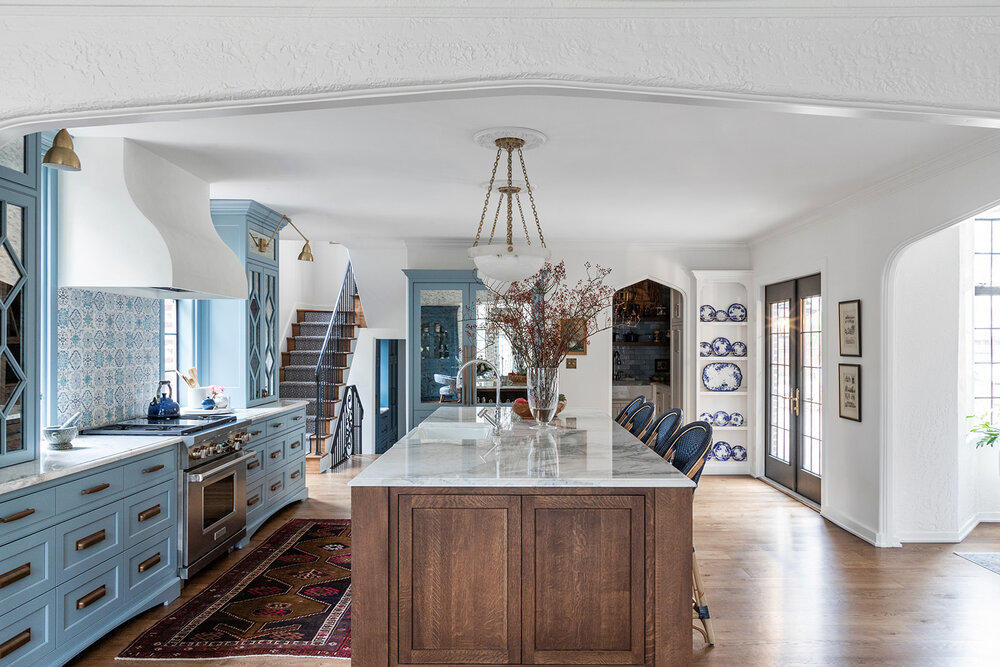
What was the design brief for the new house?
Skilling: It was a Tudor built in the 1920s. Some people would have taken this home and just freshened it up cosmetically with some new cabinetry and paint. It was important to Kelly and her husband to keep the architectural details, but it was partly a gut renovation in some aspects. The floor was one big slab of terrazzo, so when we took that out, it was literally down to the dirt. I know some people would think it’s awful to tear out terrazzo, but it was really cold and out of place. It’s much warmer now with wide-plank hardwood floors. They also wanted to keep the original windows, but they needed to be restored. So we had those removed, restored and put back in.
Colby: There were also original plaster walls that we didn’t want to interrupt. Part of the reason we had to tear the floor up was to put new electrical wiring in. It was the most efficient way to update the behind-the-scenes stuff, like wiring and HVAC needs.
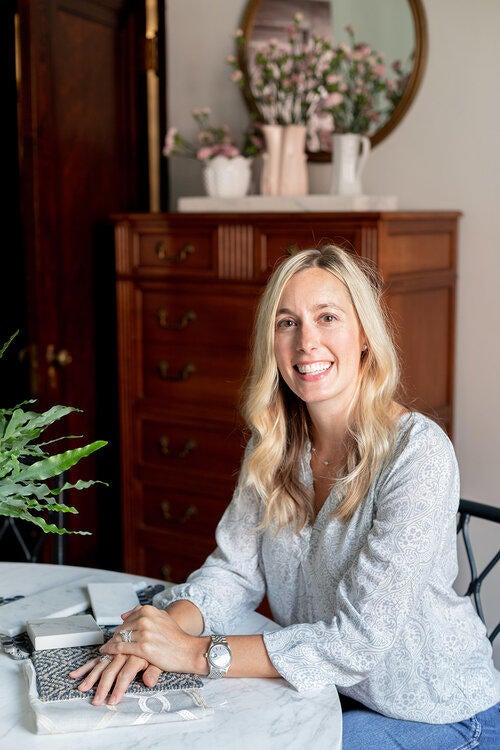
Did you go through the same proposal process as you would with a regular client?
Skilling: It wasn’t necessarily the same.
Colby: More loosey-goosey, I’d say.
Skilling: She just trusted me, so she didn’t need to see the conceptual stuff. There were no mood boards or anything like that. We did do a 3D rendering for her halfway through, even though we’d already picked everything. Just for fun! It did get them really excited about it.
Colby: I think we had fewer rounds of revisions, too. I just knew that whatever she did was going to be awesome. I’ve seen her work with clients and I’m always in such awe of how she can do this for other people. I was just so excited to be on the other side of it. I didn’t want to interrupt her creative process. And it moved really quickly, because I was just like, “Yeah, do that! Looks great!”
What’s your typical first interaction with a client?
Skilling: It’s changed a little bit over the last year. It used to be a discovery call with me, but now Kelly takes those calls and then passes them on to me. If we feel like it’s a good fit, I’ll meet with them in person and dive into understanding the client’s needs.
Do you Google them or look up the property? How much research do you do?
Skilling: Oh, we do all of that! We totally Facebook-stalk people. We don’t like to do anything blindly. There have been a lot of projects that we took on in the past that we just took because we thought we should and didn’t want to turn down work. Now, we really think about something before we take it on to make sure it’s a fit.
Colby: We have to take on work that makes sense to us. There are only so many hours in the day. When it stops being fun, that’s when her creativity is zapped.
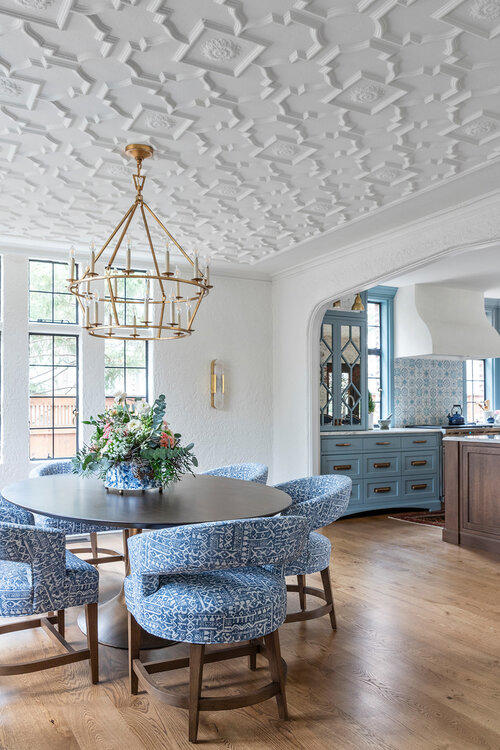
What’s your proposal process like?
Skilling: It’s pretty straightforward, but it depends on how the client likes to work. Some people just want one idea, and others want to see two or three and pick between them. They provide feedback based on what we present, and then everything becomes a line item in a spreadsheet so they can see the cost.
Colby: We often do it over email. There’s not a lot of pomp and circumstance around it. We do like to bring them into the office and talk through a larger project [like big new builds], show them samples in person and answer any questions.
How do you charge?
Colby: Hourly, and we track our billables daily, billing monthly. We charge a consultation fee, which helps us make sure that the client is serious. It covers an initial meeting, whether that’s a 30-minute phone call or an in-person site visit. We charge a markup but don’t do a cost-plus model. It’s a balance, because we try to make sure clients get a good value, but we also aren’t in the business of saving people money.
Skilling: It’s a balance of being transparent but not too transparent, because if you’re too transparent, that’s when people take advantage of you. They expect more and more from you.
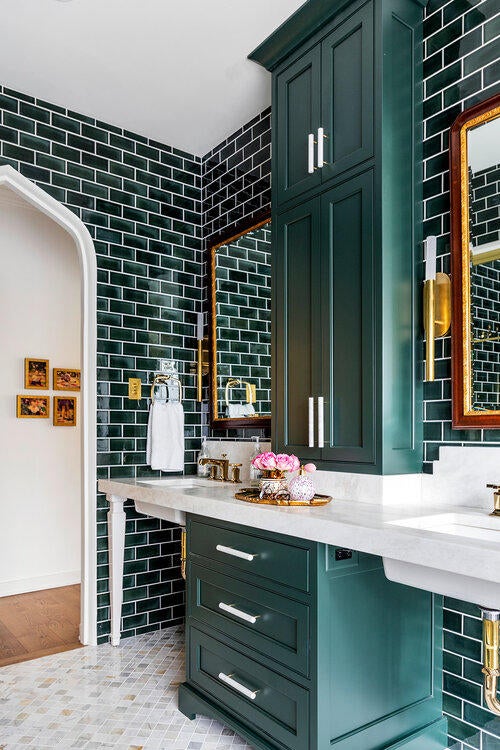
What do you wear to a first meeting, and what do you bring with you?
Skilling: I wear whatever I feel in the mood for. There’s no uniform. I always bring my phone and take tons of pictures, always a laser measuring tape and a normal measuring tape. And lots of paper for notes. Kelly and I both write everything down. She’ll be like, “Tiffany, I got it. You don’t need to be writing, too!”
Colby: Sometimes, we take samples of mood boards or floor plans from previous projects. Interior design is a completely new territory for a lot of people, and we’ve found that it helps them to understand what they’re spending money on when they can see those visuals. They can see what they’re on board for.
Skilling: Or if it’s a client that has worked with a designer before, we have our own way of doing things that might not be the same as how that other designer worked. And sometimes, if that’s the case, the client will push back, and maybe that’s when we realize it’s not a good fit.
Colby: Yes, we’re not interested in overhauling the way we work to fit a client’s expectations. We like how we do things.
If you don’t click with a potential client, how do you handle passing on their project?
Skilling: We just gently say that we don’t have the capacity to take it on, and we always recommend other designers that might be a fit. We’re also happy to offer a few minutes of advice even if we won’t take the project. We want everyone to have the best experience, even if it’s not with us.
Homepage photo: Kelly Colby’s home, which Tiffany Skilling designed | Courtesy of Tiffany Skilling
















